Can a Building Reshape a City? The Guggenheim and the Transformation of Bilbao
In the 1980s, the city of Bilbao in Spain was a total disaster—not the kind of city you wanted to visit. It suffered incredibly high unemployment rates, street violence, drug dealing on every corner, and to top all of these, ETA (Euskadi Ta Askatasuna or “Basque Homeland and Liberty,” the now extinct Basque terrorist band) embraced Bilbao as its unofficial headquarters. There was no trace of the glorious past of the city.
A depiction of pre-Industrial Bilbao
Image | Bilbaopedia
Although Bilbao is inland, its port by the river was one of the most important ones in Europe in the 1600s. When the industrial revolution started in the 1700s, Bilbao entrepreneurs saw what was to come and changed the river banks from a trading port to an industrial one. Thanks to shipbuilding, huge fortunes were made. Some families even created the Basque Stock Exchange and Bilbao became the economical center in the north of Spain.
At the beginning of the 1900s, the big shipbuilding companies found cheaper lands to assemble boats. Those companies left behind thousands of unemployed families and a city in ruins. The city hall was totally bankrupt, and the extremely polluted town and river, which long ago saw the splendor of modernity, were dying little by little.
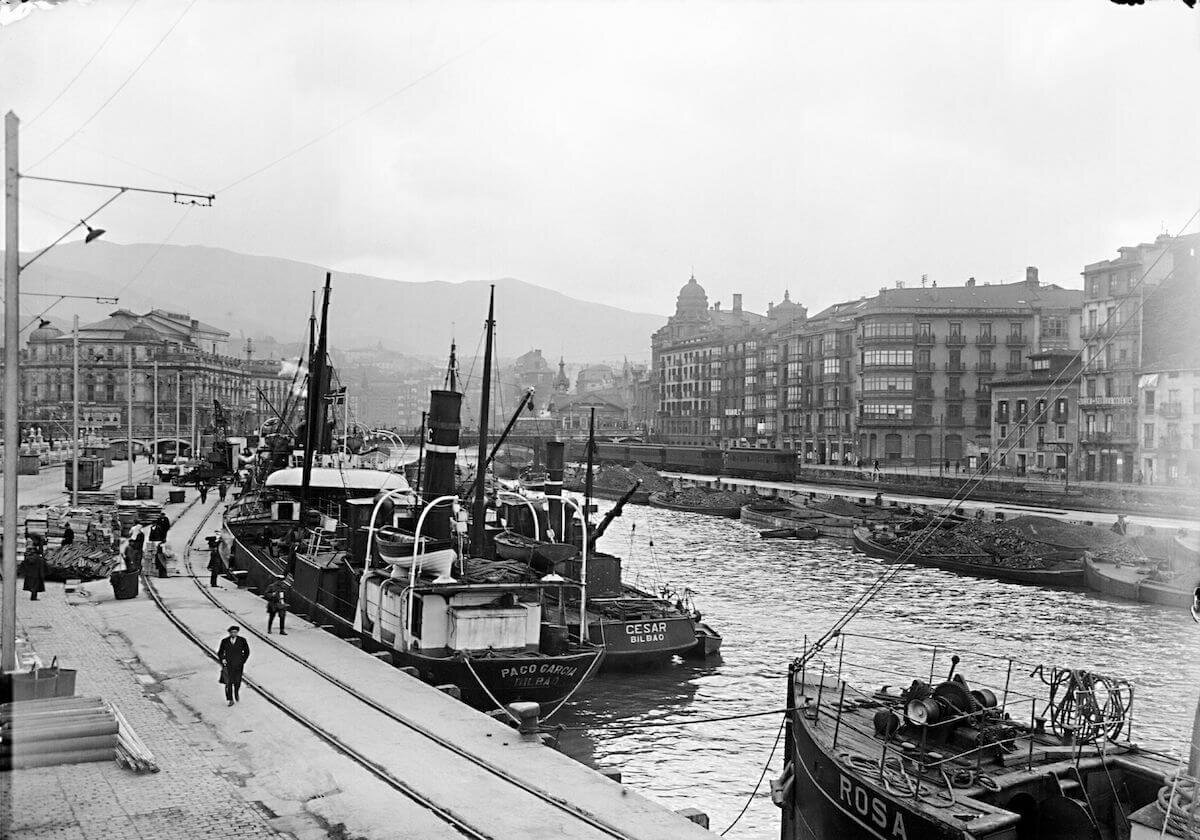
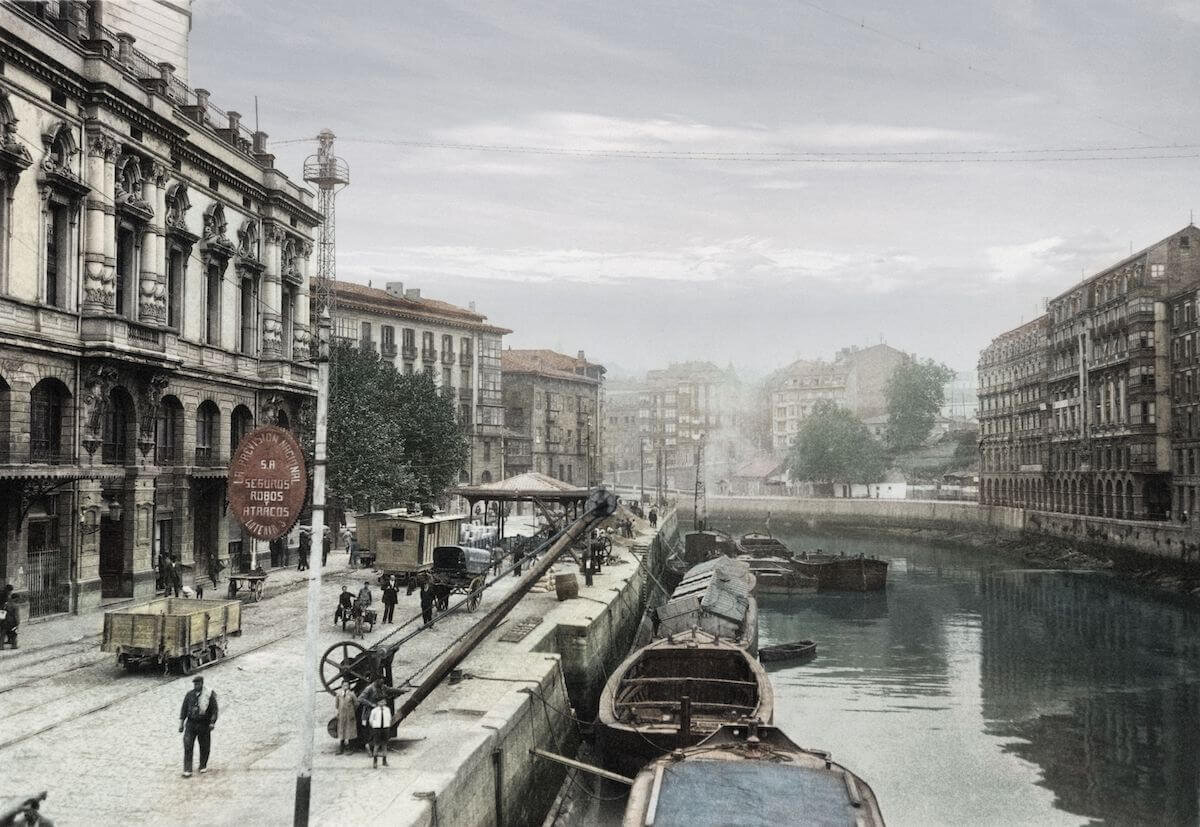
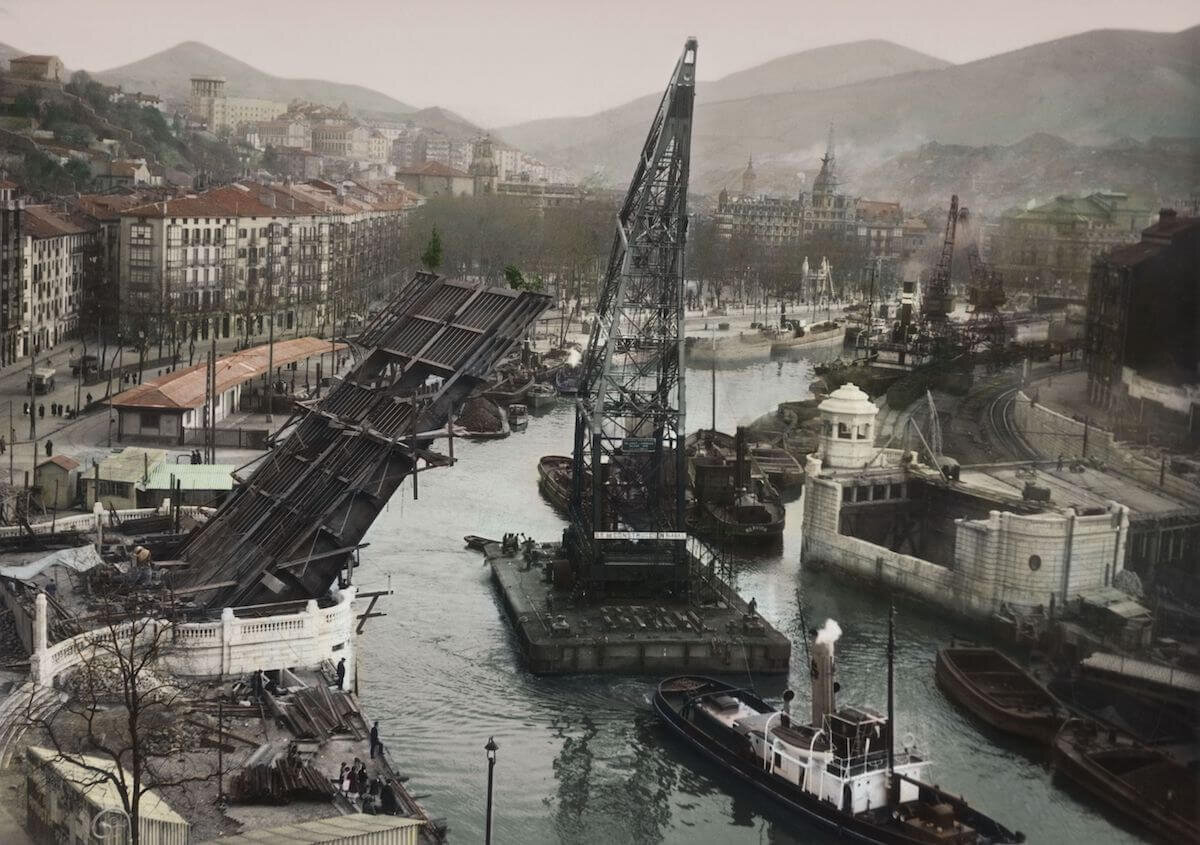
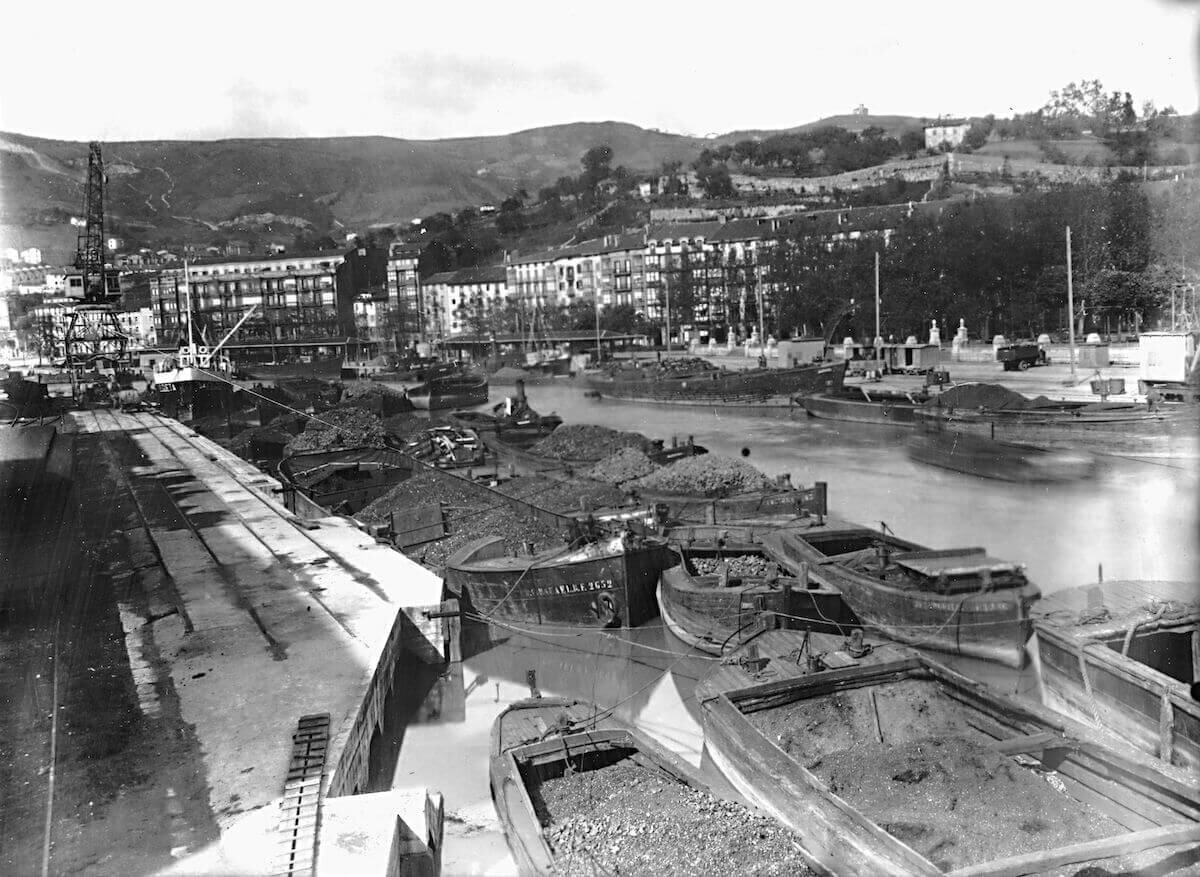
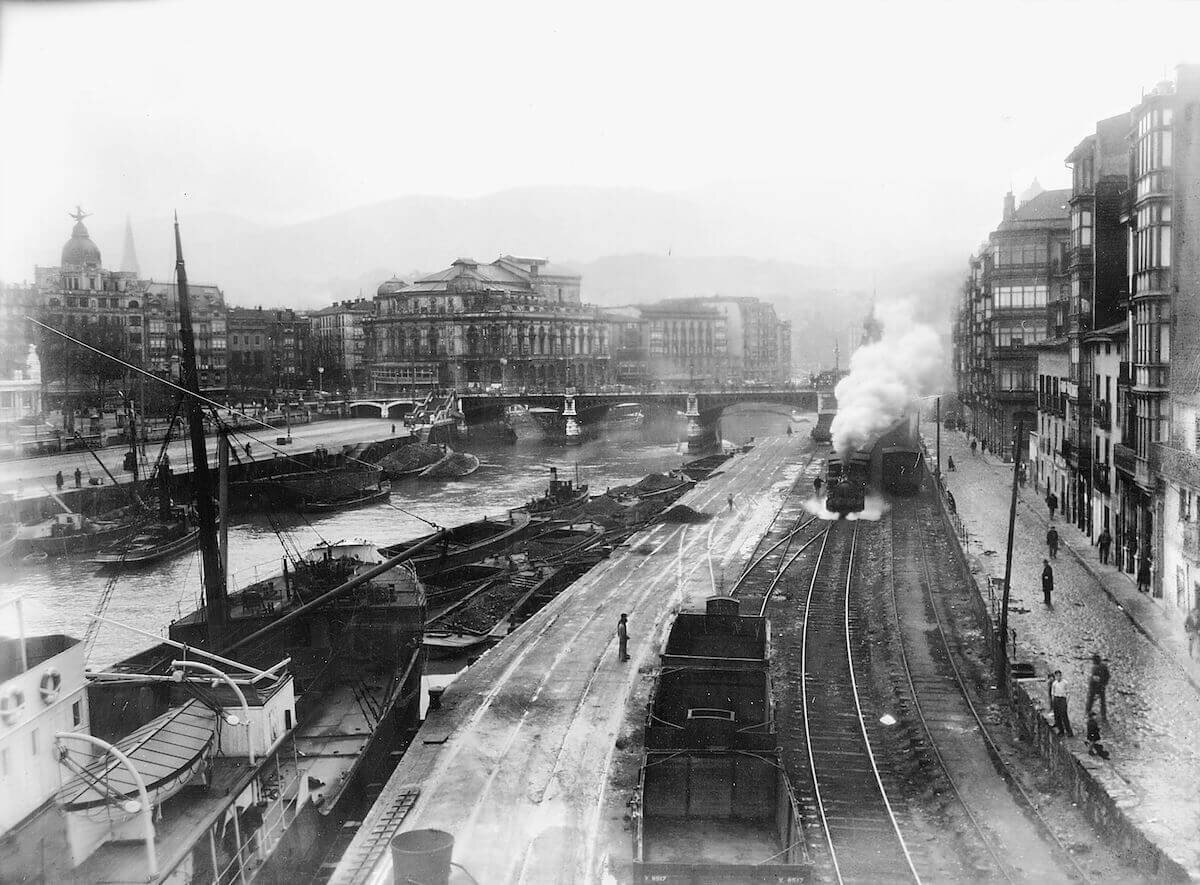
It was 1990 when Bilbao, like the Phoenix rising from its ashes, started its rebirth. Although at that time it seemed ridiculous to invest so much money in a city like Bilbao, the local administration and especially the people from Bilbao were determined to make it work. The river was cleaned, gardens were created, and an amazing metro system was designed by British architect Sir Norman Foster to connect the city with the coast.
But they needed the cherry on top of the cake.
At that time, the Solomon R. Guggenheim Foundation was looking to open a new museum. They thought about Switzerland, Germany and even Tokyo. At the end it was Spain, and particularly the city of Barcelona. What happened was that Barcelona was getting ready to host the 1992 Olympic Games and could not care less about opening a new museum in town. It was then that the Basque government made its move and invited Thomas Krens, General Director of the Foundation, to visit Bilbao.
Mr. Krens was overwhelmed by Bilbao’s determination to bring Guggenheim to the city. The city hall promised to pay for the entire cost of whatever building the foundation would decide to construct, plus 20 million dollars in order to expose their art for the next ten years. By the end of 1991, the Solomon R. Guggenheim Foundation signed an agreement with the city of Bilbao.
Now it was the moment to think about the building. It had to be as spectacular as the Guggenheim headquarters in New York City designed by Frank Lloyd Wright in 1937. Many architects presented their projects, but the design that stood out the most for its uniqueness was the one by Frank Owen Gehry (Canada 1929).
The Frank Lloyd Wright-designed Guggenheim Foundation Headquarters
Image | Tomas Eldsvold, Unsplash
It is said that the first sketches were done on a napkin, but little by little, Gehry’s magical building started to shape up. Making his initial sketches come to life required a revolutionary computer design system called CATIA in order to create the volumes designed by Gehry. In October 1993, the first stone of the museum was placed.
Constructed in time and on budget (165 Million Euros), Guggenheim Bilbao opened its doors October 18th, 1997. Its nearly 2.5 hectares are covered with 42,000 titanium slates that change color depending on how the sun reflects on them.
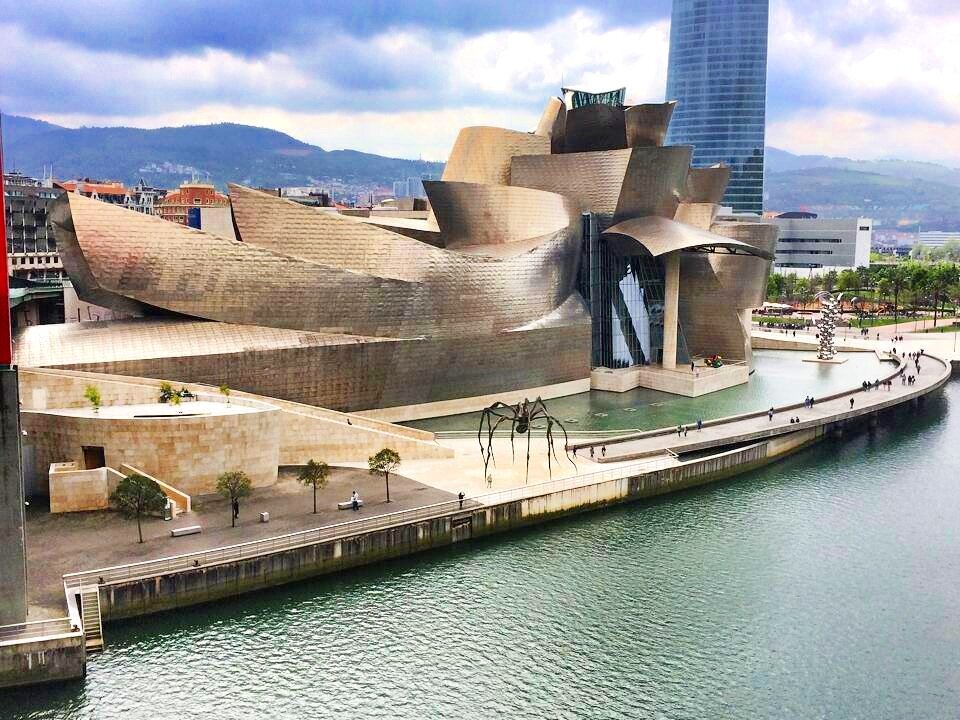

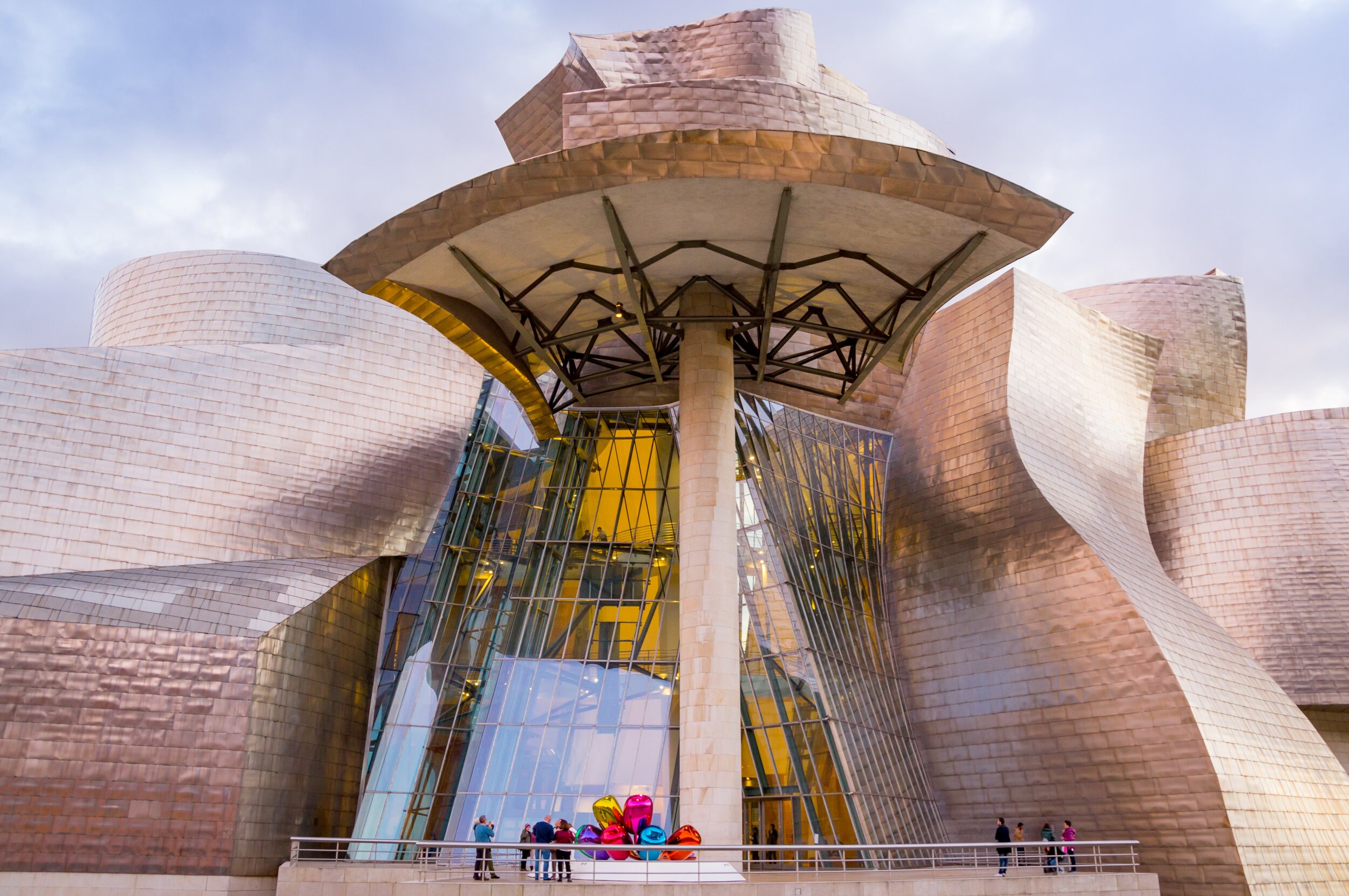
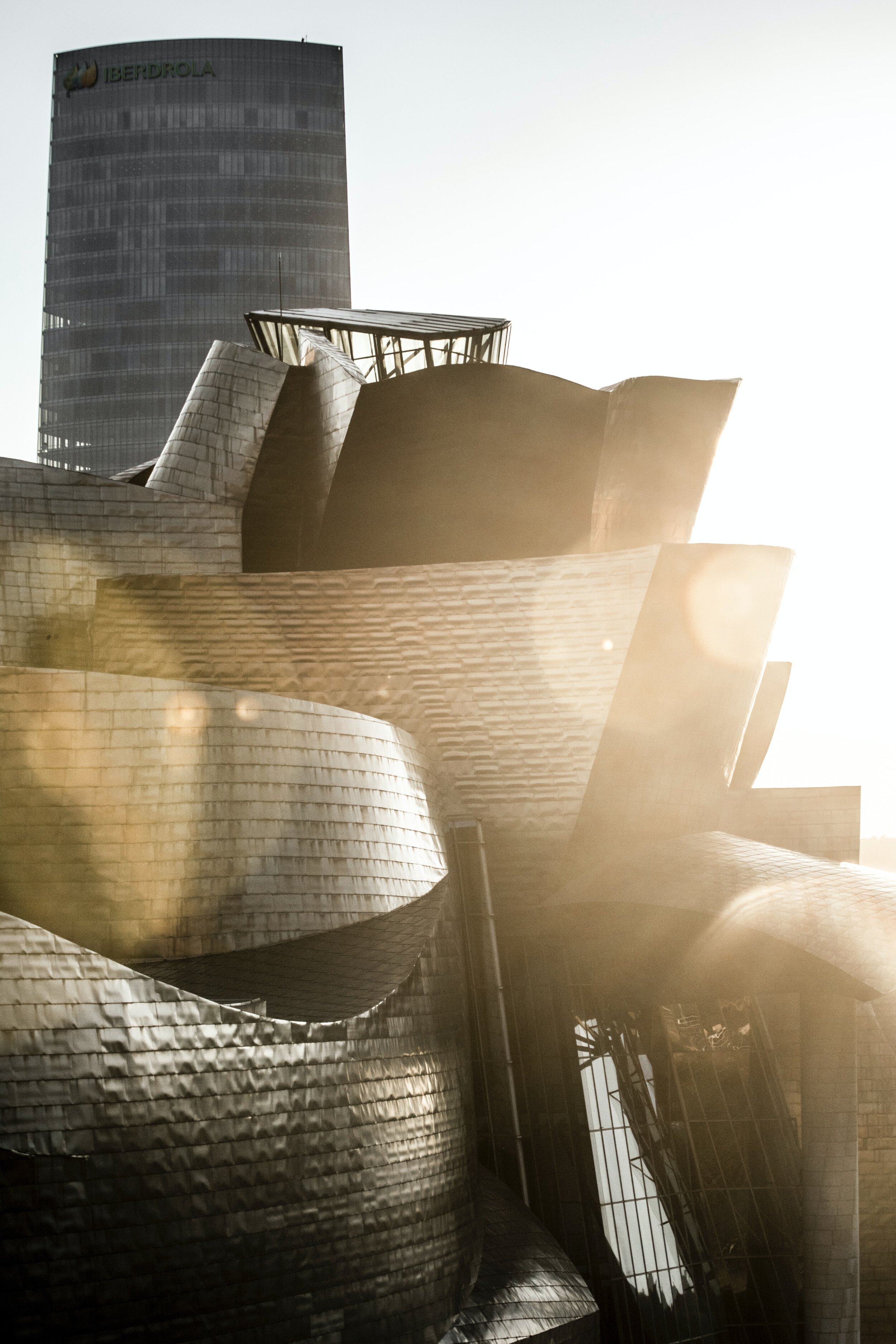
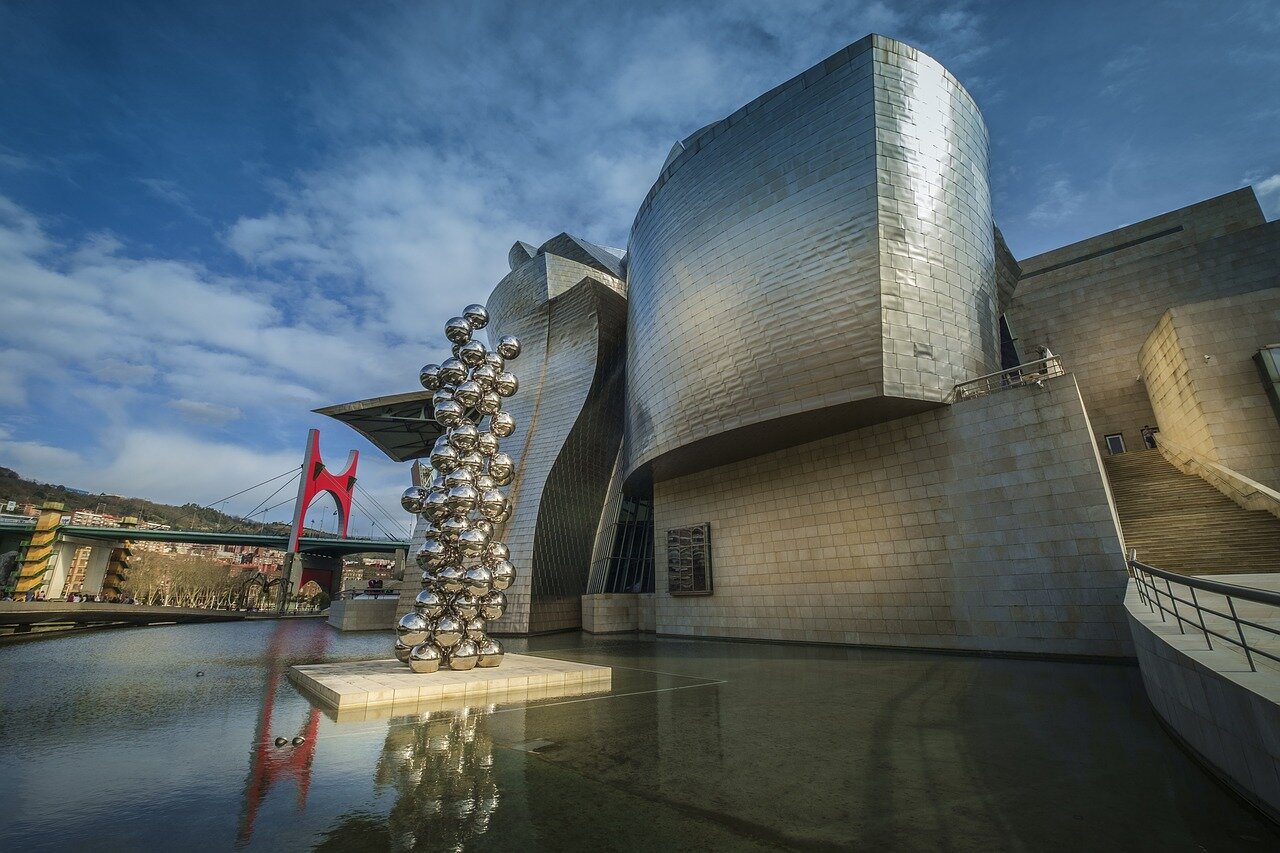
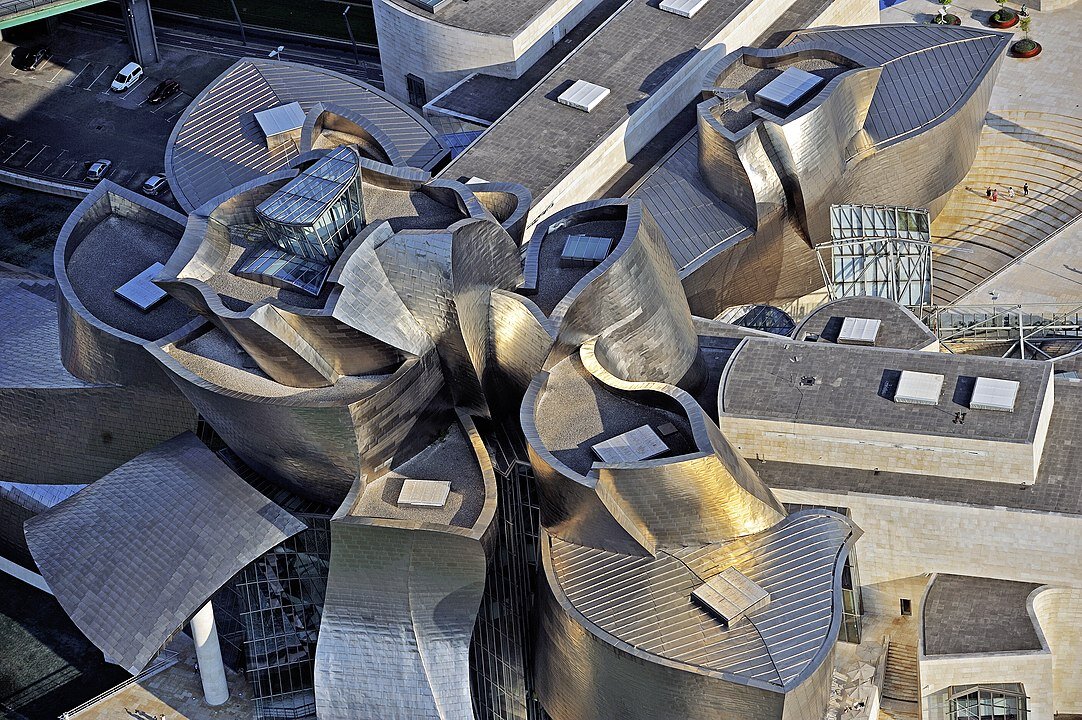
From the very beginning, this masterpiece has touched everyone that has had a chance to visit it. The curviness of the lines makes the building seem to be floating like a ship on its way to the ocean. Each volume is more beautiful than the one by it. Some people say it looks like a boat, others like a fish. Part of the fun of art and architecture is how it can be interpreted in so many different ways by different people.
It has been almost 25 years since the debut of the Guggenheim Museum in Bilbao, and the changes to the city’s riverfront landscape and the the overall economy exceed expectation. Over the last two-and-a-half decades, more than 20 million people have visited the museum. In 2019 alone, there were more than million guests, 69% of them came from abroad. That kind of influx of travelers to the city has precipitated the creation of new hotels (more than 100 since 1997) , stores, cultural spaces, bridges, and all manner of eateries ranging from basic sustenance to haute cuisine.
And with more visitors comes the need to create events to entertain them as well as the locals who are part of the fabric of the redevelopment of their own town. International events, such as the Red Bull’s International Cliff Diving Contest , the Bilbao BBK Music Festival, and the MTV Awards, are just a few crowd-pleasing spectacles that have invigorated city.
This kind of massive change in such a short span of time takes vision, leadership, and faith. The city leaders recalled the prosperity in Bilbao’s past and believed that they could recharge their ailing hometown, boost their economy, and foster civic pride with the creation of an architectural masterpiece that would draw the attention of the world. And it seems they were right.
You can see some great before and after photos here, or if you’d like to get
Let’s take a stroll together on the river banks of Bilbao’s river:
If you’d like to visit the Guggenheim Bilbao museum and experience it with Fran , you can book spot on Fran Glaría’s Basque Staycation tour. You will learn about Basque culture from the comfort of a rural home in the Pyrenees and do daily excursions to discover places like Bilbao. It is the ultimate Basque experience.


